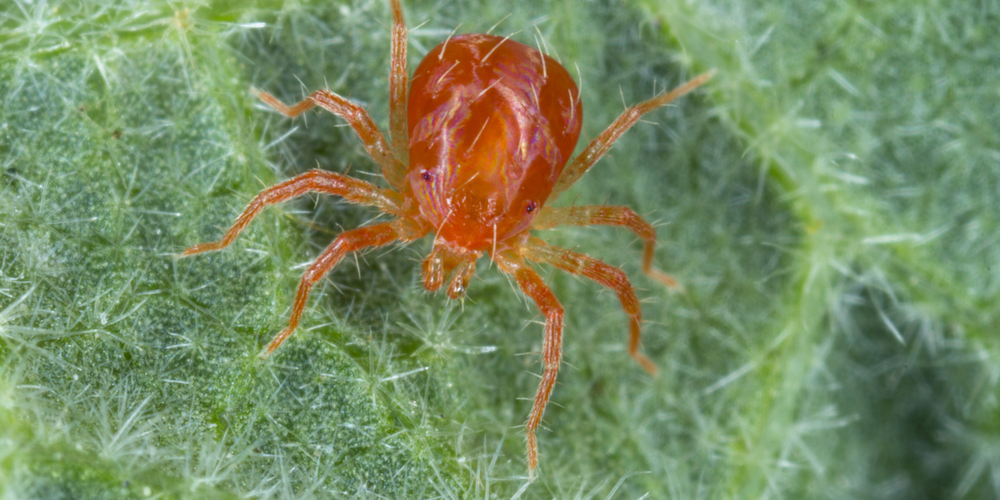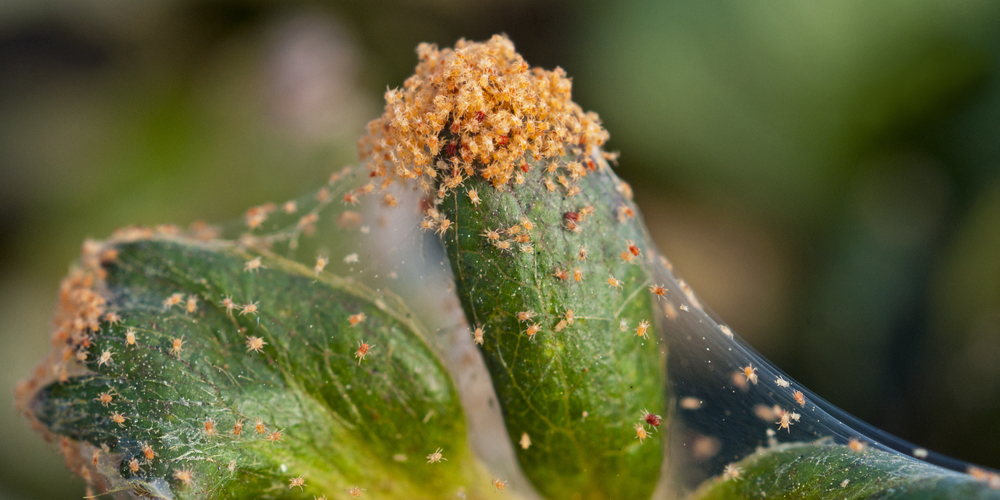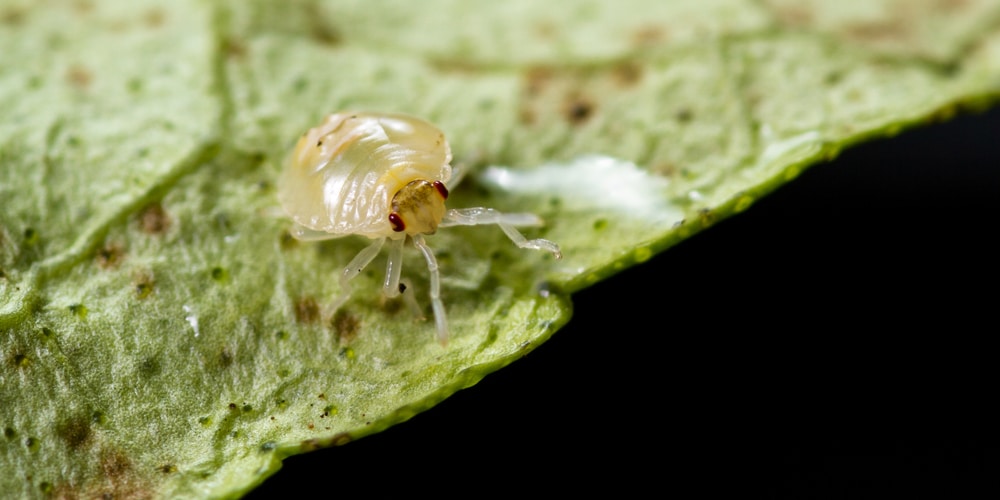Spider mites are pernicious garden pests that can cause damage to your annuals. While less than 1/20 of an inch long, these mites gather in large colonies and eat voraciously.
You may want to encourage natural predation in your garden to control these pests without chemicals. Fortunately, several other kinds of common insects and arachnids eat spider mites.
This article will share details about the spider mite, explain which types of insects eat spider mites and how to preserve natural predators in your garden.
Most Common Types of Spider Mites
Spider mites are arachnids, not insects. Two-spotted spider mites attack over 200 kinds of plants. If a plant comes under siege by spider mites, it may experience stunted growth or even die.
The two-spotted spider mite has eight legs like other arachnids. They are yellowish-orange and have two dark spots, hence the name. They may be as small as 1/50th of an inch, and they create thick webbing when they heavily infest a plant.
Other common spider mites include the European red mite, the spruce spider mite, and the southern red mite.
The European red mite infests apple, plum, cherry, and pear trees, among other deciduous fruit trees and shrubs. The spruce spider mite feeds primarily on conifers like spruce, fir, juniper, and pine. Finally, the southern red mite destroys roses, azaleas, hollies, and rhododendrons.
What Eats Spider Mites?
Fortunately, many predators hunt for spider mites. Here is a selection of these beneficial insects for your garden:
Ladybugs
Ladybugs are voracious. They can eat up to 100 mites per day. They also prey on aphids.
Predatory Mites
Predatory mites will crawl inside the spider mites’ webbing to eat them. Persimilis and fallacis are the two most valuable types of predatory mites. These mites look very much like their prey but do not have spots. Shiny, pear-shaped mites, their legs are longer than their destructive cousins.
Thrips
Six-spotted thrips devour immature spider mites. They also like to eat their eggs. They are tiny insects about 1/8 inch long, white to pale yellow with small spots.
Lacewings
Lacewings can form an essential part of your backyard pest control strategy. They eat mealybugs, aphids, spider mites, scale insects, leafhopper nymphs, thrips, and whiteflies.
Minute Pirate Bugs
Minute pirate bugs are true bugs that eat soft-bodied pests of all life stages. They can eat over 30 spider mites each day.
Stethorus Beetles
Stethorus beetles can eat between 75 and 100 spider mites every day. Even the immature stages eat up to 75 mites daily. They can be valuable partners in your pest control arsenal.
Introducing Natural Predators
Fortunately, it is relatively easy to introduce these beneficial insects and arachnids to your garden. You can order boxes of these creatures online and introduce them to your outdoor spaces.
Tips To Control Spider Mites
Here are three tips from plant experts to help you control spider mites and encourage natural predators in your garden:
- Keep the dust in your garden down by using mulch or ground cover.
- Don’t disturb leaf litter in your yard or garden between November and April to avoid harming the beneficial overwintering insects and arachnids.
- Avoid using insecticides because these will interfere with natural predation.
Growing Plants Safely Without Spider Mites
Spider mites can attack a variety of different plants from palm trees to fiddle leaf figs. By using a combination of environmental methods and introduced predators, you should be able to keep a spider mite infestation under control. No matter how you choose to deal with mites, ensure you don’t use chemical insecticides to combat an infestation.
Consult your local university’s agricultural extension service for more help with spider mites. They can tailor their recommendations to your particular area and climate.


